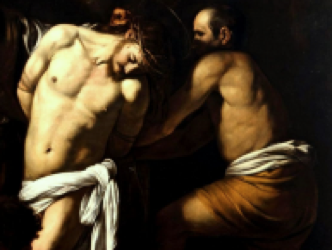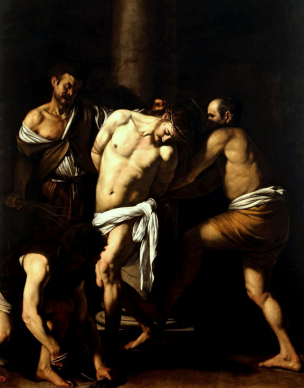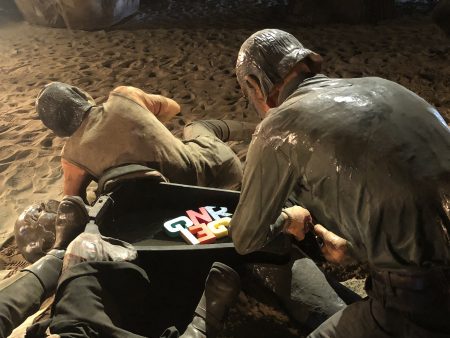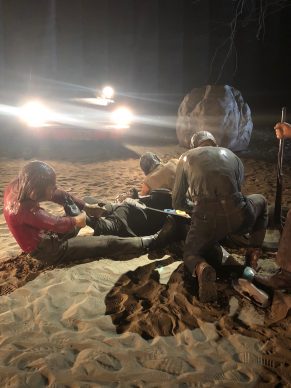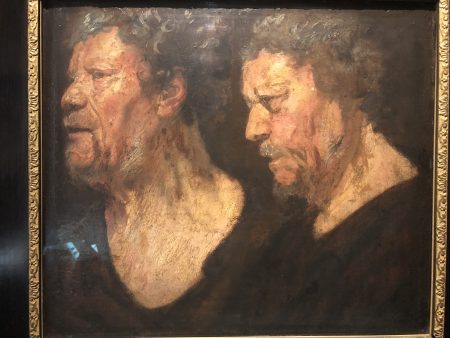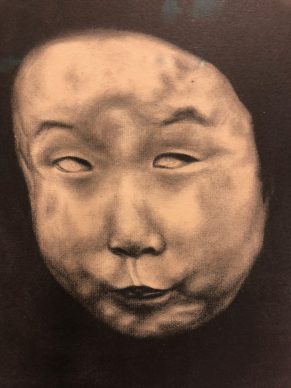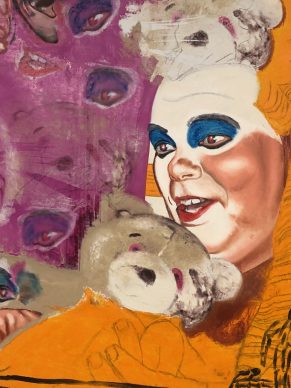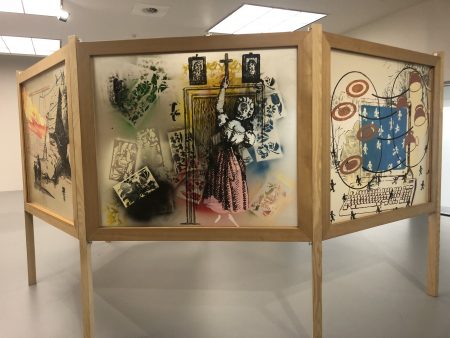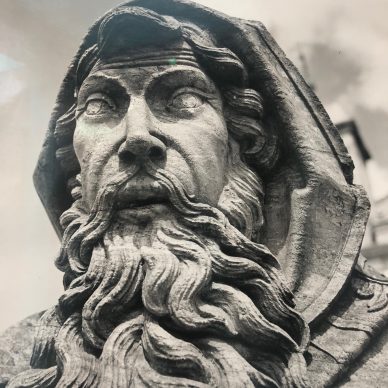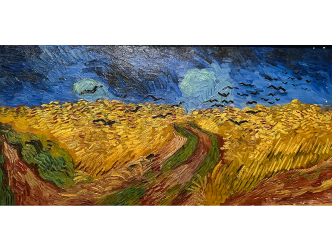Currently showing in Antwerp at the MHKA, the city’s museum of contemporary art, Luc Tuymans (born in 1958), one of the most acclaimed painters on the world stage – yet by what anomaly is he still overlooked by the museums in Paris?- is curating an exhibition dedicated to the baroque under the title “Sanguine”.
As he himself says, this is not an exhibition by an art historian. It’s a unique show that functions according to the association of ideas. This proves fascinating because the routes the artist chooses to take are completely unexpected.
Tuymans, who paints figurative subjects of a rather sobre and conceptual nature, has assembled a group of artworks ranging from Rubens (the other reigning artist of Antwerp) to the contemporary Japanese artist Takashi Murakami, from a kitsch painting of a hamburger made in China but painted by the American artist Mike Bouchet (born in 1970) to the taxidermy headless horses who died on the battlefield in the trenches of the First World War by the Belgian artist Berlinde de Bruyckere (born in 1964).
The subject imposed here is that of the baroque, but it is revisited in a highly creative way: “baroque is a notion invented in the 19th century to denote an art of the past, the first globalized art, from Germany to Latin America. What interests me in the notion of baroque is the idea of a powerful visual impact,” the artist explains.
Set within this context, the exhibition revolves around two major works.
The first is a large-scale canvas by the legendary master of Italian painting, Caravaggio. It dates from his Neapolitan period and comes from the Capodimonte museum. The “Flagellation of Christ” from 1607-1608 depicts an exhausted male figure with a sublime physique – “the most beautiful torso in the history of art!” exclaims Tuymans – being brutalized by three fierce-looking men who are placed partially in the shadows. A monument to what we would call the baroque.
Outside the museum, an inflatable dome has been especially constructed to house an enormous installation by the American artist couple Nancy (born in 1943) and Edward Kienholz (1927-1994). They have reconstructed an episode, one that is, alas, all too realistic, from the history of racism in America. Five cars illuminate the scene showing a group of white men who are castrating a black man. The life-size installation is so arresting that it makes you reluctant to get up close to these cruel figures.
From Caravaggio to Kienholz there is only a single step, that of 350 years during which mankind has continued to brutalize one another. And these acts of violence have also given to rise to masterpieces that Luc Tuymans defines as baroque.
Meanwhile, we wonder how his work as a curator influences his work as a painter.
Next March, Luc Tuymans will be the subject of a solo show at the Pinault Foundation in Venice.
At the time of our interview he was making a new series of paintings of the eyes of pigeons, from which he sends me some images. As Tuymans explains, homing pigeons are a Belgian speciality and the subject of competitions where people place bets. Nowadays the Chinese come all the way to Belgium to seek out these birds and the Belgians publish books in Chinese detailing their various characteristics. It would appear that the eyes are a decisive factor in the selection of the best specimens. This is the subject of Tuymans’ new series of paintings.
From 18 October until 25 February, the exhibition “Sanguine” will be held at the Prada Foundation in Milan in an expanded form to include, among others, work by Kerry James Marshall but without the Kienholz masterpiece “Five Car Stud”, which was already exhibited at the Prada Foundation in 2016.
Until 16 September, Antwerp. www.muhka.be.
Support independent news on art.
Your contribution : Make a monthly commitment to support JB Reports or a one off contribution as and when you feel like it. Choose the option that suits you best.
Need to cancel a recurring donation? Please go here.
The donation is considered to be a subscription for a fee set by the donor and for a duration also set by the donor.

